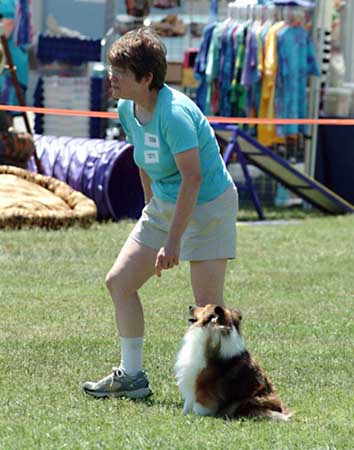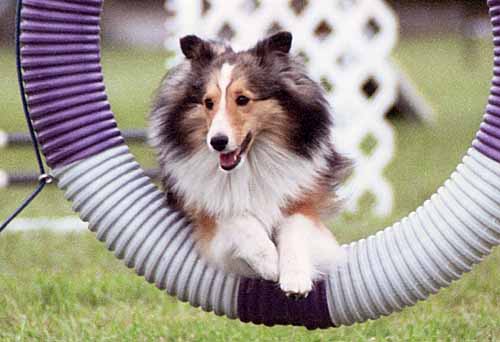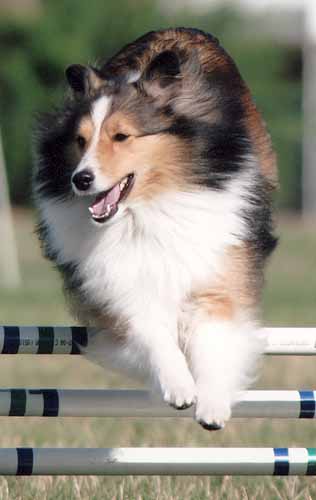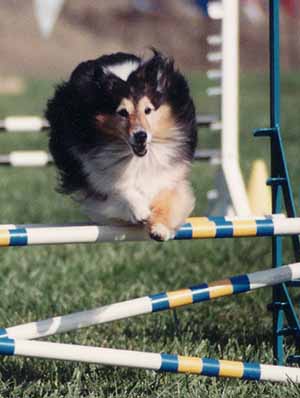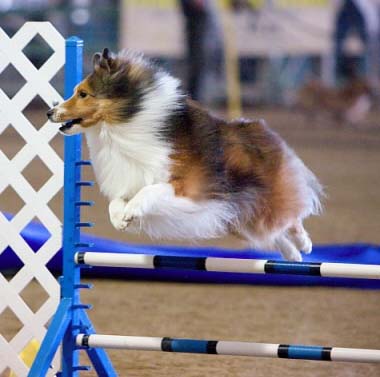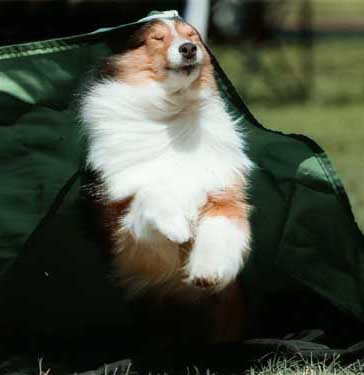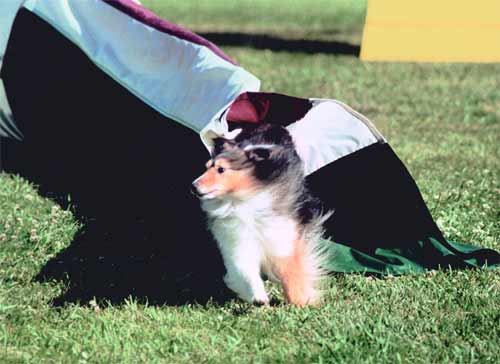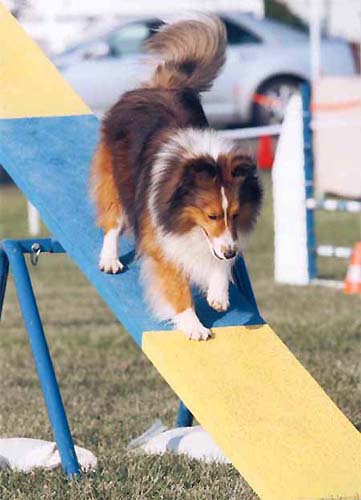 Reg Reg Where performance counts! |
|
Agility |
|
Agility and Shelties seem to be made for each other. Agility consists of a race through a set of obstacles, which the dog must negotiate in the correct order within the allowed time. More than any other organized dog event, agility is a game for which most dogs are wildly enthusiastic. |
|
Where it all begins: The Start Line is one of the most important parts of an agility run. A Sheltie who won't hold the start line until released is less likely to take the handler's direction for the rest of the course. The handler may start the run with the dog at her/his side, or may lead out, walking beyond several obstacles until in a better position to direct the dog. Here, Alicia directs Ceili to stay as she begins to lead out. |
|
|
Jumps: The jumps may be single, double or even triple wide, and may include a broad jump and a tire jump. Most Shelties love the jumps.
|
|
|
at the age of eleven and a half. |
|
In AKC agility events, the dog will not qualify if he knocks a bar off the jump.
|
|
|
|
Tunnels and Chutes: Tunnels come as open tunnels and as closed fabric chutes. The dog must negotiate the tunnel without being able to see what is beyond it.
|
|
|
|
| Pause Table: In AKC agility trials, the dog may assume any position on the pause table. Other venues may require a stand, a sit, or a down. The Shelties have only one word for the pause table: boring. It is not uncommon for excited dogs to stand in anticipation before the end of the table count: "Five and four and three and two and one and GO!
|
Contact Obstacles: The contact obstacles include the A-frame, the dog walk and the teeter totter. The dog runs across the entire obstacle. For safety reasons the dog is required to place at least one foot into the yellow contact zone when ascending and descending the contact obstacles. (AKC allows the dog to miss the contact zone when ascending the A-frame.) |
|
| A-Frame: The A-Frame is set at 5 feet 6 inches high in standard AKC agility classes. |
| Dog Walk: Safely negotiating the 48" high dog walk at a run requires that the dog have an acute awareness of where he is placing his feet. Like all other skills, this one has to be taught.
|
Teeter-Totter: The dog must touch the yellow contact zone when descending the teeter-totter, and must not leave the obstacle until the board touches the ground.
|
|
| Weave Poles: For many dogs, the weave poles are the most difficult obstacle to learn well. The dog must enter poles from right to left, and weave through the entire sequence of six to twelve poles. No skipping poles allowed!
|
